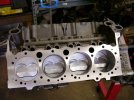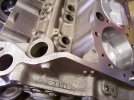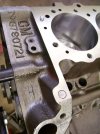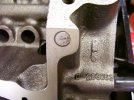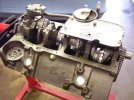Further clarification on the 62 aluminum. Chevrolet built appx 18 Impalas in Flint with aluminum front ends. It is believed they were built as a test prelude to the 63 Z-11’s coming. They had 409/409 engines definitely not Z-11’s.
The other cars, Impalas, Bel Air or Biscayne were built with parts shipped by Chevrolet to specific drag racers of the day as I pointed out in the previous article. A handful of over the counter parts were sold as well. The part numbers were very simple utilizing the steel fender or hood part number with a A at the end.
No one really knows how many were made but probably about 30. Not exactly positive but I think there are maybe 10 left.
Others please chime in here.
The other cars, Impalas, Bel Air or Biscayne were built with parts shipped by Chevrolet to specific drag racers of the day as I pointed out in the previous article. A handful of over the counter parts were sold as well. The part numbers were very simple utilizing the steel fender or hood part number with a A at the end.
No one really knows how many were made but probably about 30. Not exactly positive but I think there are maybe 10 left.
Others please chime in here.

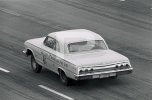
 I had a ghetto Denver resident of Aztec descent pull up next to my car at a traffic light, spot the OS/S in the window, and he yells 'Hey bro did you get that car at the police auction!?'
I had a ghetto Denver resident of Aztec descent pull up next to my car at a traffic light, spot the OS/S in the window, and he yells 'Hey bro did you get that car at the police auction!?'
